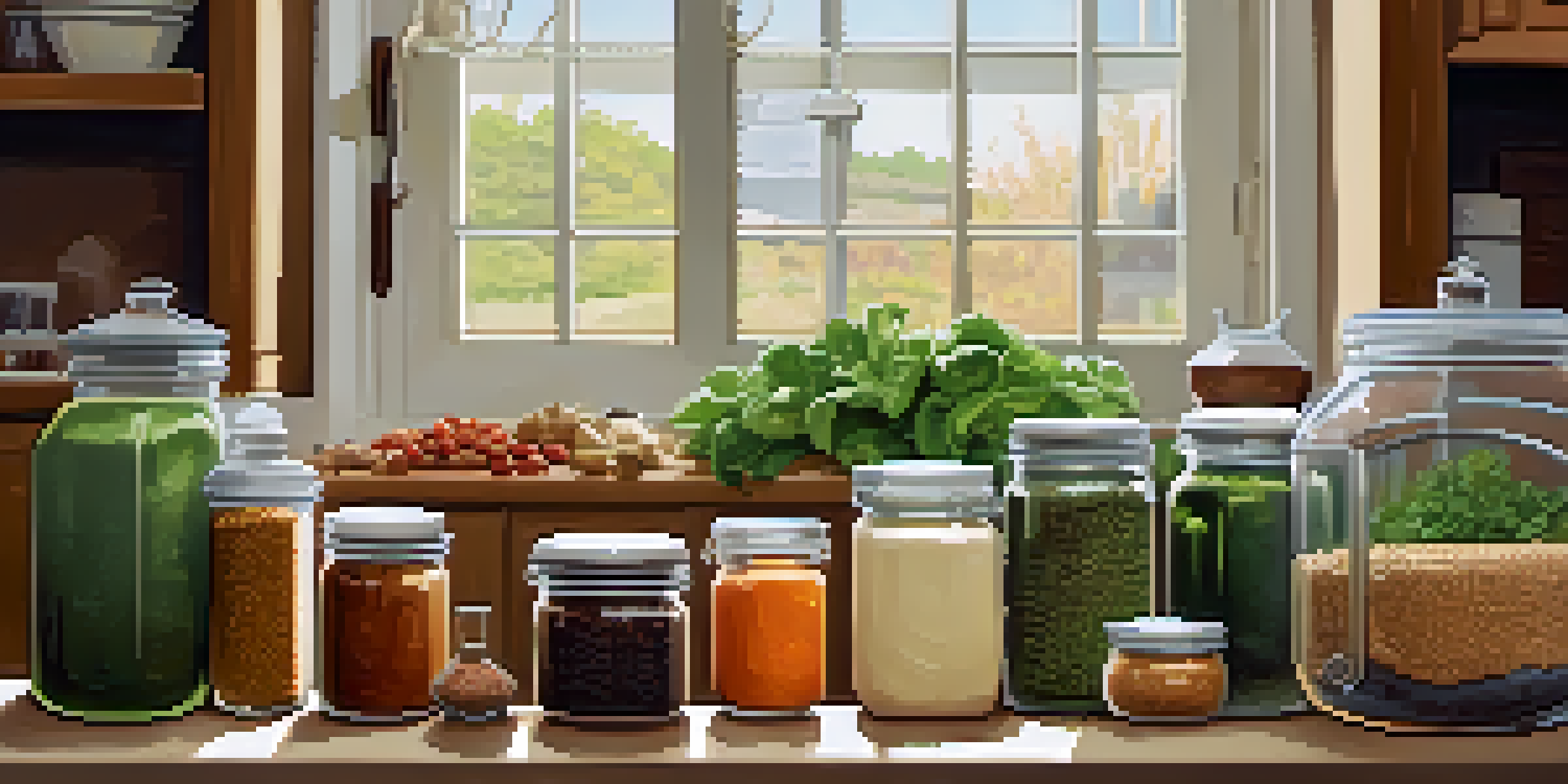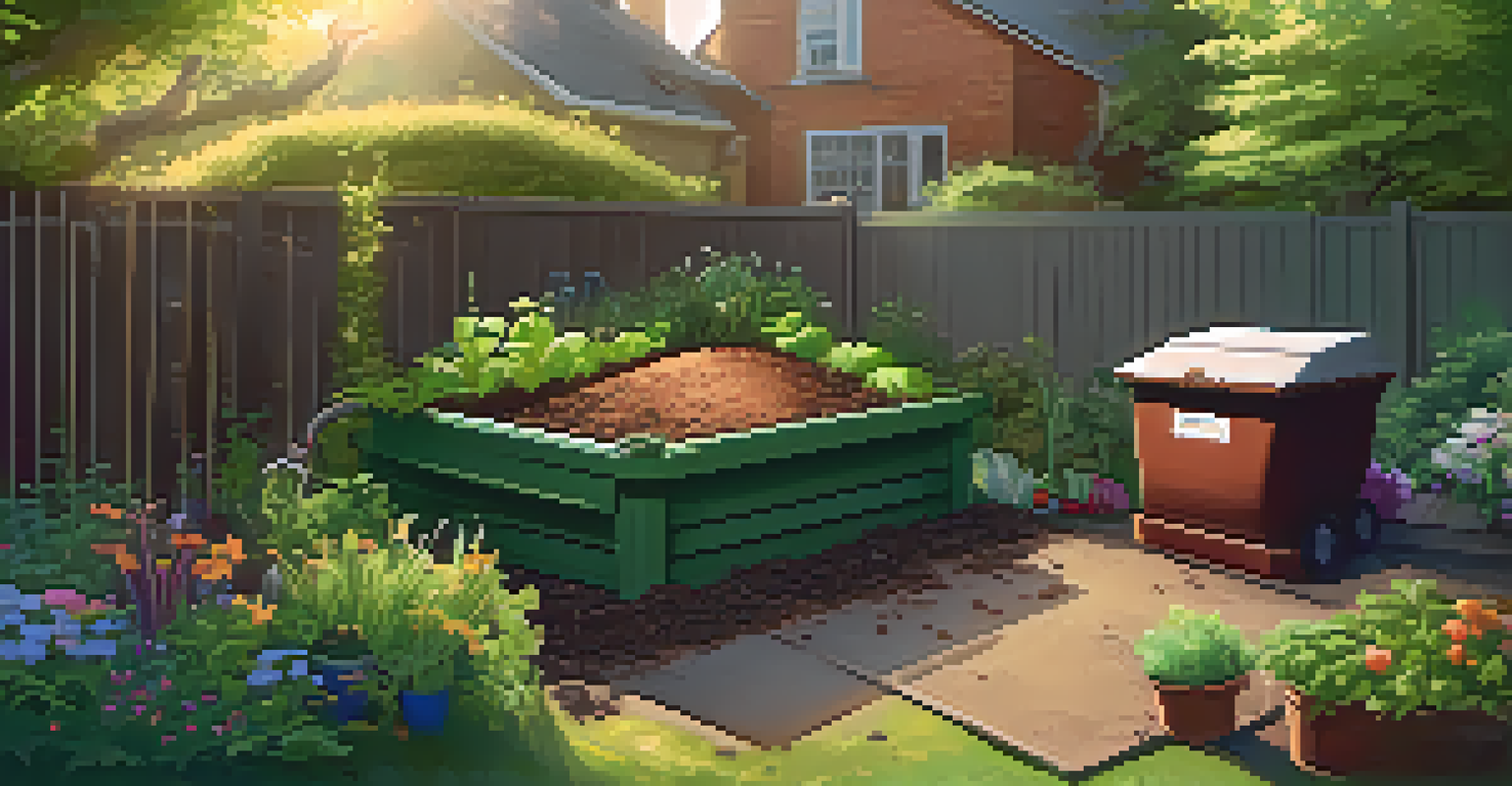Creating a Zero-Waste Kitchen for Healthy Cooking

Understanding Zero-Waste Living and Its Benefits
Zero-waste living is all about minimizing what you throw away, aiming for a sustainable lifestyle. It encourages us to rethink our consumption habits and find innovative ways to reduce waste. By adopting a zero-waste approach in our kitchens, we not only help the environment but also promote healthier cooking practices.
The greatest threat to our planet is the belief that someone else will save it.
When we focus on reducing waste, we often opt for fresher, more whole ingredients. This shift can lead to preparing meals that are not only healthier but also more flavorful. Plus, embracing this lifestyle can foster a deeper connection to our food and where it comes from.
A zero-waste kitchen can also lead to significant cost savings over time. By utilizing what we already have and opting for bulk buying, we can reduce our grocery bills while still enjoying nutritious meals. It's a win-win for our health and our wallets!
Assessing Your Current Kitchen Setup
Before diving into zero-waste practices, take a good look at your current kitchen setup. Identify areas where waste is generated, such as excess packaging or food scraps. This assessment will help you understand where you can make the most impactful changes.

Keep a waste diary for a week to track what you throw away the most. This exercise can reveal common patterns, like overbuying produce or using single-use items. Knowing your habits is the first step toward transforming your kitchen into a more sustainable space.
Embrace Zero-Waste Living Benefits
Adopting a zero-waste lifestyle promotes healthier cooking practices and can lead to significant cost savings.
Once you've identified your waste patterns, brainstorm solutions tailored to your lifestyle. For instance, if you frequently discard spoiled vegetables, consider meal prepping or using a food storage technique to extend their life. Small adjustments can lead to significant reductions in waste.
Choosing the Right Tools and Containers
Investing in the right tools can dramatically reduce your kitchen waste. Opt for reusable containers, glass jars, and beeswax wraps instead of plastic bags and cling film. These eco-friendly alternatives not only cut down on waste but also help keep your food fresh longer.
Waste is a design flaw.
Consider using compost bins for food scraps, which can turn waste into nutrient-rich soil for your garden. Composting is a great way to minimize landfill contributions while benefiting your plants. It's an excellent example of turning waste into a resource.
Additionally, look for tools that help you maximize your ingredients, like vegetable peelers that create minimal waste or food processors that make it easy to use all parts of a vegetable. Investing in high-quality, durable kitchen tools can pay off in both sustainability and efficiency.
Planning Meals to Minimize Waste
Meal planning is a powerful strategy for reducing food waste. By planning your meals for the week, you can buy only what you need, avoiding impulse purchases that often go unused. This practice not only minimizes waste but also saves time and money in the long run.
Try to incorporate ingredients that can be used in multiple recipes. For example, a bunch of kale can be used in salads, smoothies, and soups. This versatility ensures that you fully utilize your purchases, decreasing the likelihood of spoilage.
Plan Meals to Reduce Waste
Meal planning helps you buy only what you need, minimizing food waste and encouraging creative use of leftovers.
Don't forget to include leftovers in your meal plans! Get creative with reusing last night's dinner by transforming it into a new dish, like turning roasted vegetables into a hearty soup. This approach not only reduces waste but also keeps your meals exciting.
Buying in Bulk and Choosing Seasonal Foods
Buying in bulk is a fantastic way to cut down on packaging waste. Many grocery stores offer bulk bins for grains, nuts, and spices, allowing you to bring your own containers. This practice not only reduces waste but often saves you money too.
Choosing seasonal foods is another key aspect of a zero-waste kitchen. Seasonal produce tends to be fresher, tastier, and more affordable, as it's harvested at its peak. Plus, it often comes with less packaging, as local farmers typically sell their goods directly to consumers.
When you opt for seasonal ingredients, you also support local agriculture and reduce your carbon footprint. It's a simple yet effective way to align your cooking habits with a more sustainable lifestyle while enjoying the freshest flavors nature has to offer.
Preserving Food to Extend Its Life
Food preservation is an essential skill for anyone looking to minimize waste. Techniques like freezing, fermenting, and canning can help you make the most of your ingredients. Learning these methods not only reduces waste but also allows you to enjoy seasonal flavors year-round.
For example, if you have an abundance of tomatoes in the summer, consider making homemade salsa or tomato sauce to freeze. This way, you can savor that fresh taste long after the harvest season has passed. It’s a delightful way to keep your meals exciting throughout the year.
Utilize Composting and Recycling
Incorporating composting and recycling practices can significantly reduce your kitchen's environmental impact.
Fermenting is another popular method gaining traction for its health benefits and flavor enhancement. From kimchi to sauerkraut, fermented foods can add a nutritious punch to your meals while allowing you to use up surplus produce. It's a fun and creative way to preserve food!
Incorporating Composting and Recycling Practices
Composting is a cornerstone of a zero-waste kitchen. By composting your food scraps, you can divert organic waste from landfills and create nutrient-rich soil for your garden. It's a simple yet effective way to close the loop in your food system.
To get started, create a designated compost bin in your kitchen or backyard. You can compost fruit and vegetable scraps, coffee grounds, and even eggshells. Just remember to avoid composting meat, dairy, and oily foods, as they can attract pests.

In addition to composting, embrace recycling practices for packaging and other materials. Make sure to rinse containers before tossing them in the recycling bin, and educate yourself on local recycling guidelines. Together, composting and recycling can significantly reduce your kitchen's environmental footprint.